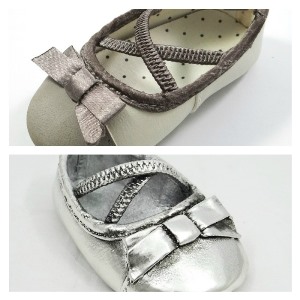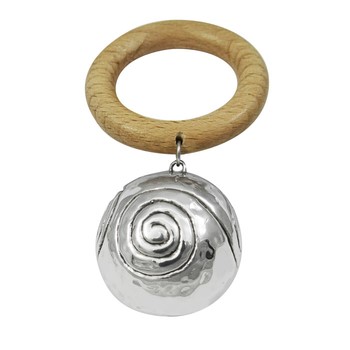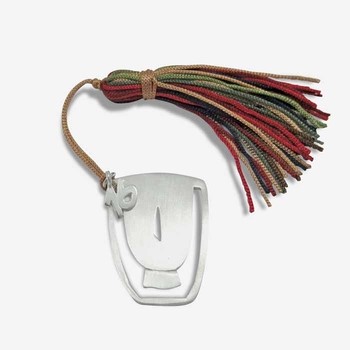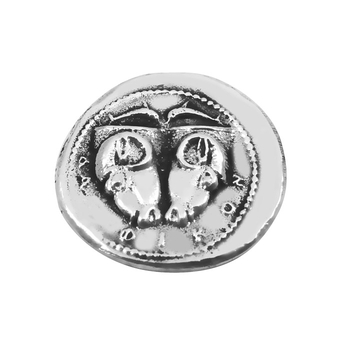Philippakis Art Workshop in Athens

PHILIPPAKIS ART workshops in Athens - 55 years of handmade creations and great collaborations!
It is true that artwork created by hand preserves its value throughout the years. Having studied ancient Greek art and craftsmanship of metal processing, we create in our workshops selected artwork. The method we use, Electroforming, gives us the ability to have results of great detail in the copy produced, since our know-how in mold creation gives us the ability to work with original findings without spoiling them.
More than five decades now, the creation of such artwork in museum replicas, sculpture, jewelry, interior decoration and business gifts, is the exclusive BUSINESS of the Philippakis workshops. Working with various materials, such as, silver, copper, bronze, aluminum, marble and resin, we create artwork of high aesthetic. Absolute consistency, creative mood and above all, guarantee of originality characterize each and every cooperation that we engage in.
MuseumMasters.gr New Product Catalog

At the end of 2018 we decided to creat a new product catalog for our wholesale and retail customers. In this catalog you will be able to see almost all our collection of art inspired by our ancient Art and Civilization! Greece is a great source of inspiration and always hides new pahts to follow. This is what we have been doing all these 55 years in order to enrich our collection and propose to you art of high aesthetic that will preserve its value throught out the years!
Follow the link MuseumMasters.gr New Product Catalog
We wishing you a very happy and prosperous new year 2019!
Metal Plating / Electroforming

Philippakis Art workshops are experts and have the best know-how in metal coating in Greece. They use the electroforming method to coat any surface or material. They have been working for more than 55 years with individual artists from all over the world and have made reality their dreams. They have given breath to their art and gave them the opportunity to take part in great exhibitions.
It is true that artwork that is created by hand preserves its value throughout the years. Having studied the ancient Greek art and craftsmanship of the metal processing, they create in their workshops selected artwork.
The creation of such artwork in museum replicas, sculpture, jewelry, interior decoration and business gifts, is the exclusive objective of the Philippakis workshops.
Working with various materials, such as, silver, copper, bronze, aluminum, marble and resin, they create by hand artwork of high aesthetic. Absolute consistency, creative mood and above all, guarantee of originality characterizes each and every cooperation that they are engaged in.
Metal coating (electroforming) can be done in almost all surfaces and anyone interested can contact Mr. Dimitrios Philippakis by sending mail to info@philippakis.gr or by calling +30 2109964841.
Summer Vacations are on!

Summer vacations are ON!
Our workshops will be closed from 12 - 28 August!
You can place your orders as usual and we will start shipping from September 1st, 2017 and on.
Have fun and relax!
The MuMa Team
MuseumMasters.gr collection at the National Geographic Museum!

MuseumMasters.gr follows the great exhibition “THE GREEKS”.
From Chicago to Washington DC. MuseumMasters.gr collection at the National Geographic Museum 26/5 - 9/10/2016.
Two of the largest U.S. museum that hosted the great Greek traveling exhibition titled «The Greeks: Agamemnon to Alexander the Great» Chose selective handmade items from our art collection to enrich their museum shops. The exhibition was organized by the Greek Ministry of Culture and the Consortium of North American Museums with official representative the Canadian Museum of History in Ottawa. It is the most representative "panorama" of Greek civilization that has ever traveled outside Greek borders and include 543 exhibits-masterpieces of ancient Greek sculpture, painting and jewelry art, from all the archaeological museums of Greece. MuseumMasters.gr is the e-shop of PHILIPPAKIS APT, an artistic laboratory that counts already 53 years of life and handmade art creations in Athens, Greece.
The museum chose one of the products of our collection, bowl depicting the Star of Vergina to advertise this exhibition.
Kids' Corner

Our effort would have not been completed if we had not designed a "corner" for children! So here at MuseumMasters.gr or better more at "MuMa" - easier for children to pronounce - we improvise and try to create items that have source of inspiration the art and culture of ancient Greece in order to create special gift proposals for mums and for our little friends!
In our "Kids’ Corner", you will find handmade silver 999° items, mainly because it is a safe metal, in case a baby wants not only to play with... but also to "taste" it! We always want to offer to the newborn an exclusive and classy gift and it is also a Greek custom to offer an item in silver to welcome the new member of the family!
Our collection, will of course include other materials such as, the clay toys you have already seen in this category, the unique handmade creations of my beloved Myrto Poltaki from Crete, who is a mother and works in her kitchen home, after putting her babies to sleep!
Stay tuned! We have a lot more news to come ...!
The MuMa.gr product design team.
MuseumMasters.gr collection at The Field Museum of Chicago!

“Your product really elevates the assortment in the store - I think everything looks really striking, all blue, white and gold.” said Mr. Mark Kanazawa, the Head the Shop of The Field Museum of Chicago.
The above comment refers to the copies that we sent as MuseumMasters.gr (the online shop of the PHILIPPAKIS ART museum workshops based in Athens) and was made for the great exhibition "The Greeks: Agamemnon to Alexander the Great'', which is organized by the Greek Ministry of Culture and the Consortium of North American Museums with official representative the Canadian Museum of History in Ottawa.
This is the most representative "panorama" of Greek culture that has ever traveled outside Greek borders and includes 543 masterpieces of ancient Greek sculpture, painting and art of jewelery, coming from all the Αrchaeological Μuseums of Greece.
The exhibition was inaugurated on December 12 at the Point a Calliere Museum, at the Montreal Archaeology and History Complex in Montreal, and remained there until April 26, 2015. It was then moved to the Ottawa Museum of History in Canada from June 5, 2015 to October 12, 2015.
Νow, is located at The Field Museum in Chicago, where it was inaugurated on November 24, 2015 and will remain there until April 10, 2016. The last visiting point is the National Geographic Museum in Washington from 26 May 2016 to 9 October 2016.
"It is the largest Greek exhibition that is ever shown in North America," stressed Canada's Ambassador in Athens, Robert Peck, noting that "many of the archaeological finds have never been exhibited outside of Greek boarders."
We are proud of the honor made by The Field Museum, to chose our own handmade works (museum copies) for the museum's shop for this great exhibition. We have created an constructive cooperation and our goal is to continue and expand our partnerships with other museums in the world. Through the quality and aesthetics of our collection, our aim is to promote Greece, the Art and Culture and give to the people the opportunity to "Take a piece of Greece with you" (which is our slogan!)
Season Greetings from Museum Masters!

The marble figures usually called "idols" or "figurines are the best-known shapes of the Cycladic Art that flourished during the early Bronze Age in the Aegean. The “Cycladic figurines” evolved in the Cyclades, in the period between 3200 and 2200 BC and continued to be produced until 2000 BC.
The marble figurines vary in sizes and style. The most common are the figures with the folded arms, known as the “canonical” type figurines, which usually represent nude female figures with the arms folded above the abdomen.
The figurines have lyre-shaped heads with wide foreheads, angular shoulders and incisions indicating the arms, the pubic triangle and the joints. They often seem to be lying down and to be in the state of pregnancy.
The nose is the only feature that is strongly indicated at the heads of the “folded-arm” figurines, while other parts, like the ears are often engraved or embossed.
However, pigments were used to denote facial features, such as the eyes and the hair, while it is speculated that some idols might have been decorated with silver jewelry.
The meaning and function of the figurines is most likely connected to the religious beliefs of the prehistoric Aegean civilizations. It is assumed that they are representative of the "Mother goddess", a symbol of fertility and rebirth. They have been variously interpreted as idols of the gods, images of death, children's dolls, and other things.
Museum Masters celebrates Christmas and welcomes the New Year with our impressive charm, which can be used as a bookmark, “spreading” messages of joy and rebirth for the New Year.
Explore our collection, buy unique “timeless” gifts and take a piece of ancient Greek history with you! Make your purchases for your business and personal gifts online and get your order sent directly to your home or your office.
Merry Christmas & Happy New Year 2016!
Revival of the Ancient Pentathlon!

In the northern part of the Aegean Sea, between Samothrace, Mount Athos, Imvros and Lesvos, the volcanic island of Lemnos (Limnos) is located. The prehistory of the island is clearly revealed through the archaeological sites and the island’s museums, such as the Maritime and Sponge Museum in Nea Koutali, as well as by its historic towns, Hephaestia and the ancient capital of Lemnos, Myrina, which was named after the wife of the first king of the island, Thoas.
The island is a historical and mystic destination, since the island’s history is linked with myths and epic tales. According to Greek mythology, the Argonauts on their journey to Colchis arrived to Lemnos. During their stay on the island, Queen Hypsipyle organized five athletic contests, thus creating the Pentathlon.
The five events of the pentathlon (discus, javelin throw, long jump, stadion race, wrestling) were probably invented by Jason, the leader of the Argonauts. Telamon excelled in the discus, Lynkeus in the javelin throw, and the two sons of Boreas, Zetes and Calaïs at running and jumping. Finally, Peleus, father of Achilles, came out same second in all these sports, but could beat everyone at wrestling.
Then Jason in order to award Peleus for his athletic performance and martial prowess, combined the five events and proclaimed him the first winner of Pentathlon. Later on, the event first appeared on the Olympic Programme at the 18th Ancient Olympiad in 708 BC and was one of the main sports of the ancient Olympic Games.
In the modern Olympics, the Decathlon and the Pentathlon for men were introduced at the 5th Olympiad in Stockholm in 1912 and it included the events of long jump, javelin throw, discus and two running races (200 and 1500 meters). The Pentathlon continued to be a part of the Olympics until 1924, while the Decathlon is still a part of the Olympic Games.
In the 1906 Olympic Games in Athens, which became known as 1906 Intercalated Games, the five-event sport (Greek Pentathlon) was included in the Athletics program. Although, it was never included at the actual Olympics, the “Greek Pentathlon” was inspired by the ancient event and its events were jumping, discus, javelin throw, 192 meters sprint race, which is equivalent to the ancient Stadium Race and Greco-Roman wrestling.
The first female combined event was the Pentathlon, which was held for the first time at the Summer Olympics at Tokyo in 1964. The track-and-field athletes were competing in long jump, but also in shot put, 200-meter sprint race and 80 metres hurdles (it became 100 metres since 1972). Since 1984, the event was replaced by the heptathlon.
Lemnos has been claiming the origin of the Pentathlon and the local entities have collaborated with the PHILIPPAKIS ART workshops, so as to create keepsakes of the sport. These actions aim to inform the local community on the history of the sport, but also to promote the island as an archaeotourism destination, since the tourist attractions of the island are directly related to the cultural heritage of our country.
In Museum Masters and PHILIPPAKIS ART workshops we always support such great efforts and we are contributing at the promotion of our country and its ancient history through our extended list of products.
We supported the gymnasium of Livadochori, in their initiative to revive this ancient institution, in the context of a programme of cultular school activities and cross-cultural exchanges, entitled "The Pentathlon in Lemnos”, supported by the consular delegation of Italy in Lemnos. The two-day gala included athletic events of the Ancient Pentathlon, in relation to the 4th Student Festival of Lemnos, where pupils from Lemnos and Russia participated, as well as an opening and a medals ceremony.
Like a modern Hephaustus, in our workshops we constructed the medals of the event in bronze, silver-plated and gold-plated brass, continuing the ancient art of metallurgy and inspired by the ideals of Olympism and of sportsmanship.
The facilitators of the gala attended the medals ceremony. Among them were: Ms Charitini Fotopoulou, Headmistress of the gymnasium, the teachers Ms Ourania Chalikiwtou and Mr Nick Mpachtsebanos, Mr Thomas Sfounis, who was in charge of the artistic editing of the events, the President of the Red Cross and initiator of the event, Mr.Theodoros Mpaveas, the consular representative of Italy in Lemnos Mr. Kostas Doras,and Mr. Nick Karydis, organizer of the Athletic Department.
A few words about the island...
A place of gods and heroes, Lemnos is considered the island of Hephaestus, God of fire and metallurgy. According to legend, Zeus in a dispute with Hera hurled Hephaestus headlong out of Olympus. He fell at the island of Lemnos, but from the fall, he broke his leg. There, he was cared for by the Sinties, according to Homer. In return, the god taught them the art of metallurgy, setting up his workshop in a volcano called Moschilos.
In honor of Hephaestus, the ancient Greeks named the chief town of the island Hephaestia and they did sacred initiatory rites dedicated to a tribe called Kaberoi. It is said that Kaberoi were the sons of Hephaestus and nymph Cabiro.
Other stories from epic tales, associate the women from Lemnos with the Amazons. During the reign of Thoas, the women in the island neglected the worship of Aphrodite, so the goddess cursed them with stench. In result, all the women were deserted by their husbands for Thracian women, and in revenge they murdered every man on the island. From this barbarous act, the expression Lemnian deeds became proverbial among the Hellenes. After that, the island was ruled by Hypsipyle, daughter of the old king Thoas. Later on, from the Argonauts and the Lemnian women a new race was descended.
The "treasures" of Lemnian land...
Golden sandy beaches, crystal clear waters, impressive sand hills, traditional villages and archaeological sites comprise a blessed land with great production of local goods, such as dairy products, mainly cheese (“melichloro”, “kaskavali”, “kalathaki”), honey and cereals as well as a wide variety of white and red wines, with special taste because of the volcanic soil.
Finally, every visitor should try the venizelika, local sweets that were inspired by local housewives, in order to offer them to the then Prime Minister of Greece, Mr Eleftherios Venizelos, when he visited Lemnos after her release in 1912.
Useful links: MUNICIPALITY OF LIMNOS www.limnos.gov.gr | VISIT GREECE www.visitgreece.gr
Delphi, the center of the Earth!

One day the father of the gods, Zeus, came up with the idea to find the centre of the Earth. He sent two eagles to fly from the two extremities of the world: the East and the West. The birds crossed each other above the location of Delphi and Zeus declared this area “Navel of the Earth”. The centre of the world nestled in a slope of Mount Parnassus and the sacred Castalian spring spurred its crystal waters nearby. Apollo, son of Zeus, chose this place to become his sanctuary. But, he had to kill a gigantic serpent, Python, which lived in the area and guarded the ancient altar of Mother – Earth. After he slew the huge snake, Apollo transformed into a dolphin and summoned some Cretan sailors to his favourite precinct in order to set up a sanctuary and an oracle dedicated to him and become his faithful priests.
The earliest discoveries in the archaeological site of Delphi date back in the Neolithic Period (4.000 B.C.). Relics of an ancient sacred precinct, maybe in honor of Godess Earth (Gaia), came to light in a nearby cave, named Korykion. Evidence of Mycenaean habitation was discovered in the place where, later, Apollo's temple was constructed. Archaeologists estimate that the sanctuary and the oracle were officially established during the 8th century B.C. and flourished continuously through the ages since then.
Delphi was the perfect place to set up an oracle due to a crevice on a rock nearby that emitted chemical vapors and made everyone who approached dizzy and dazed. Pythia, the Delphic Sibyl, used the vapors from the cleft and the fumes of burned herbs to fall into a trance and to make her predictions. She murmured or crowed inarticulate words and phrases that the priests of the oracle “deciphered” and composed lyrical prophecies for the person concerned. The Delphic Oracle became well-known due to the accuracy of its predictions not only among the greek cities but also among foreign kings and generals.
In the centre of the archaeological site of Delphi stands the impressive Apollo's Temple of doric architecture. It hosted the Delphic Oracle and a marvellous, golden statue of Apollo. A wide stone path stretched from the temple's entrance to the main gate of the sanctuary. On both sides of this road stood statues and other offerings to god Apollo, as well as, the Treasuries. The Treasuries were small buildings made generally of marble that held the luscious gifts of every city which visited the oracle to get an advice. The most impressive of them are the Athenian Treasury and the Siphnian one. Above the Temple and the Treasuries, the most well-preserved ancient theatre stands pridly. During its prime it held all the Delphic festivities such as the Pythian Games, which were considered to be the second most important festival after the Olympic Games. This festival hosted poetry and music competitions as well as sports activities to worship Apollo and its victory against Python. The athletic games took place at the Delphic Stadium which was located northwest of the theatre and the other buldings of the sanctuary and could seat about 7.000 spectators.
All the above cover only a small amount of the imposing temples and buildings that one can find in the sacred location of Delphi, the holy insinct of Apollo that became the “navel” of divination, art and light.
Latest Articles
-
Nov 10, 2022Philippakis Art workshops participation at the Souvenir Expo Greece 2024!
-
Oct 20, 2022Celebrate with us this coming holidays!
-
Aug 1, 2022Summer Vacations 2022
-
Jan 15, 2021Our work with Artists, Georgios Kastriotis
-
Sep 8, 2020Benaki Museum, A hidden treasure!

